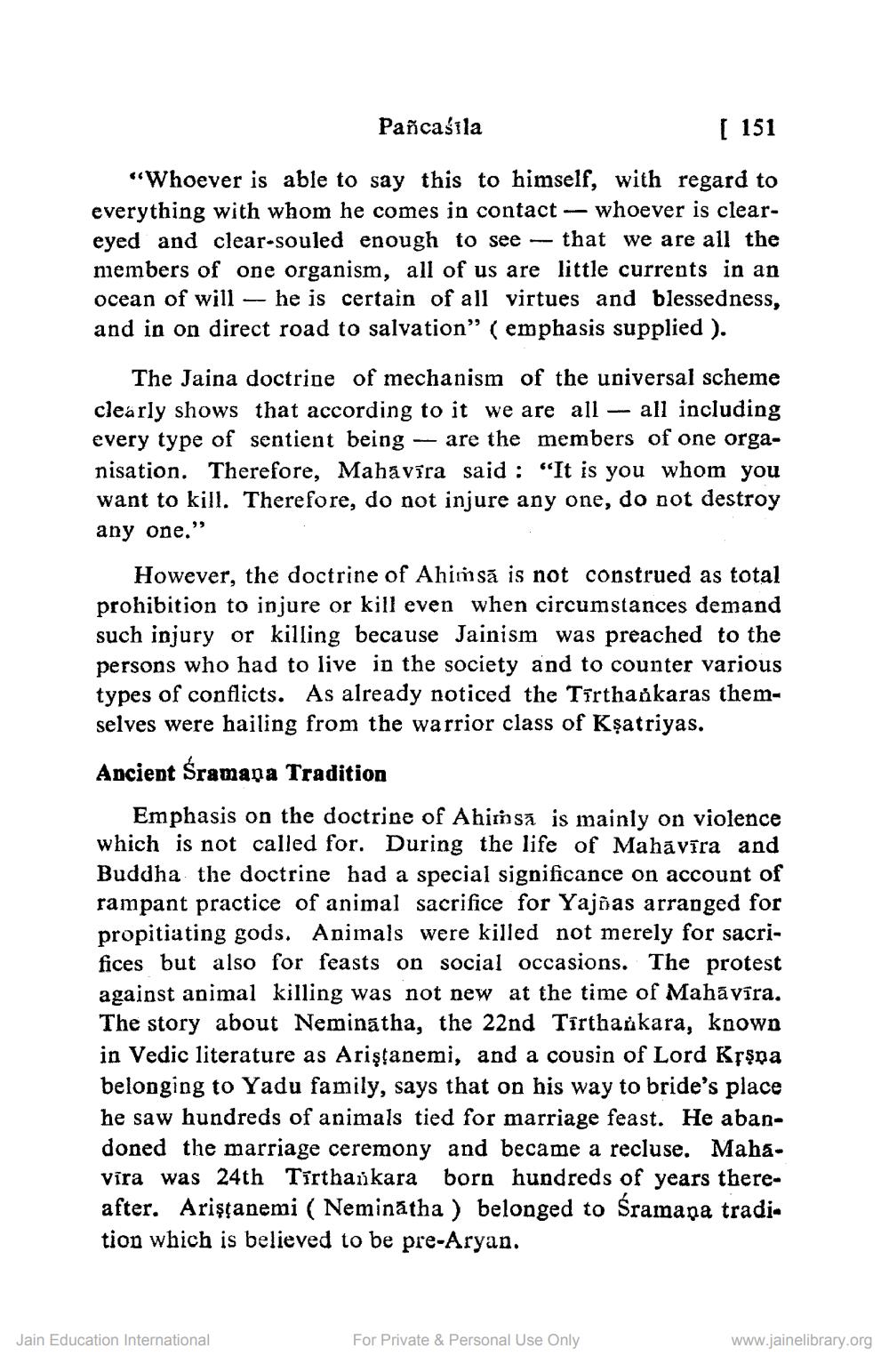________________
Pañcasila
[ 151
“Whoever is able to say this to himself, with regard to everything with whom he comes in contact -- whoever is cleareyed and clear-souled enough to see -- that we are all the members of one organism, all of us are little currents in an ocean of will — he is certain of all virtues and blessedness, and in on direct road to salvation” (emphasis supplied ).
The Jaina doctrine of mechanism of the universal scheme clearly shows that according to it we are all – all including every type of sentient being - are the members of one organisation. Therefore, Mahavīra said: “It is you whom you want to kill. Therefore, do not injure any one, do not destroy any one."
However, the doctrine of Ahimsa is not construed as total prohibition to injure or kill even when circumstances demand such injury or killing because Jainism was preached to the persons who had to live in the society and to counter various types of conflicts. As already noticed the Tirthařkaras themselves were hailing from the warrior class of Kşatriyas.
Ancient Sramapa Tradition
Emphasis on the doctrine of Ahimsa is mainly on violence which is not called for. During the life of Mahāvīra and Buddha the doctrine had a special significance on account of rampant practice of animal sacrifice for Yajnas arranged for propitiating gods. Animals were killed not merely for sacrifices but also for feasts on social occasions. The protest against animal killing was not new at the time of Mahāvīra. The story about Neminátha, the 22nd Tīrtharkara, known in Vedic literature as Ariştanemi, and a cousin of Lord Krşpa belonging to Yadu family, says that on his way to bride's place he saw hundreds of animals tied for marriage feast. He abandoned the marriage ceremony and became a recluse. Mahavīra was 24th Tírthankara born hundreds of years thereafter. Arişganemi ( Neminatha ) belonged to Sramapa tradi. tion which is believed to be pre-Aryan.
Jain Education International
For Private & Personal Use Only
www.jainelibrary.org




